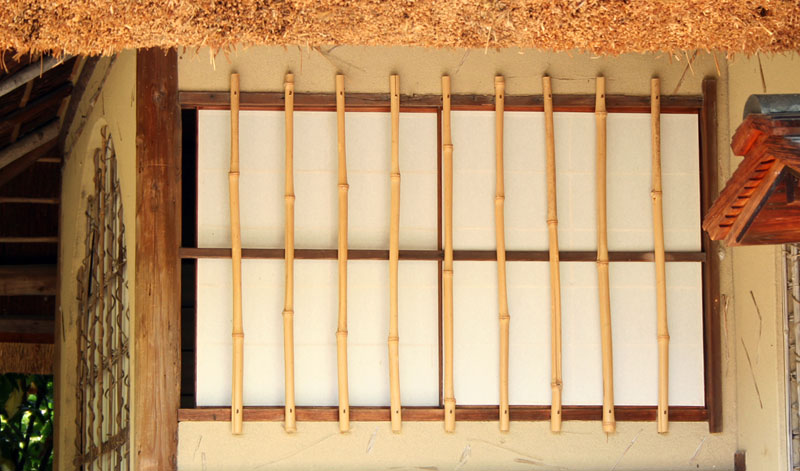| Bamboo or bamboo muntins that are used for windows
in dwellings where a suggestion of rusticity is needed, or in tea ceremony houses
*chashitsu Ί. Five, seven
or nine pieces of bamboo are arranged vertically with 10-15cm spaces in between,
depending on the size of the opening. Various methods are used to attach them:
they are nailed to the outside of the sill *shikii
~, and head jamb *kamoi ;
they are inserted into holes at the top and bottom on the inside side surfaces
*uchinori ΰ@; the bottoms
of the bamboo lath are inserted into holes in the sill while the tops are nailed
into the head jamb. If the bamboo laths are nailed into the head jam without spaces
in between them, they are called tsumeuchi lΕ or *urakumado Ly.
|



